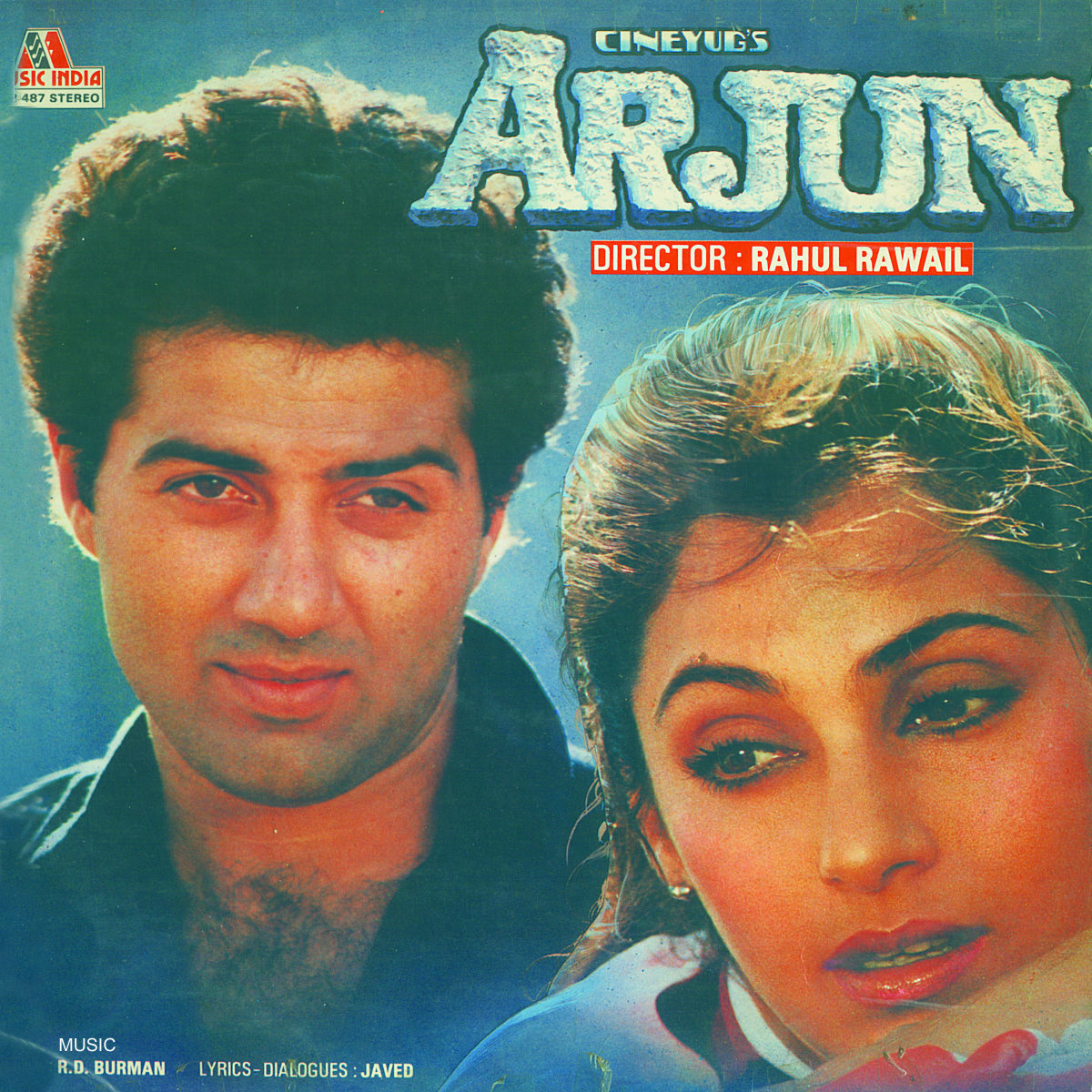Dhadkan Pal Pal …

Film: Arjun (1985)
Producer: Karim morani, Sunil soorma
Director: Rahul Rawail
Lyrics : Javed Akhtar
Singers: Asha Bhosale
–
ARJUN is one of the better more cohesive Rahul Rawail films exploring the themes of alienated youth, corruption, and grimy politics. Pancham had not disappointed Rawail with BETAAB, the film that launched Sunny Deol, who also played the eponymous protagonist in this film about an unemployed young man whose optimism and trust are torn to shreds leaving him a helpless pawn in the machinations of wily politicians.
This time around Pancham delivered the goods yet again. The background score alone merits another discussion. But the focus here is another minor gem from the Asha/Pancham team that gave us several memorable songs for club dancers and seductive molls oozing oodles of oomph.
The song opens with a spacey mix of sounds (dominated by a recurring synth motif and short flute passages) conveying a sense of mystery.
The electric guitar (which has a greater role to play later) makes its appearance with a few strums, as the music moves to a crescendo on the strings. Inexplicably, the music company (then MIL, now Universal) decided to exercise their “creative” veto and chopped off this opening minute of the song on subsequent non-vinyl releases.
The first thing that anyone who bought the tape or CD would hear was a slide on the 6th string. And then we had the “classic” Pancham mix: a central chord progression, dancing riffs on the bass, a gentle contribution from the drums. All leading up to Asha with the strings offering complementary harmonies. Listen carefully (headphones are best), and you can hear more percussion patterns overlaid to augment the overall impact of the song, but never drawing attention to themselves (unless you are consciously looking to pick them out).
The first interlude follows the opening musical fragment in spirit. There is an ominous air as sparse percussion and acoustic guitar (with some interesting sound panning and volume control) are complemented by electronic sound samples, before the electric guitar enters to mark the end of the interlude and the beginning of the first verse. There’s more percussive fodder for the alert ear: chiefly the choke pattern, the bongo(?) that appears near the turnaround, and a short off-beat percussive riff if you listen really really closely.
The second interlude is more vigorous. Furious acoustic guitar strums provide the rhythmic foundation for a flurry of violin runs. There’s more percussion (as if you hadn’t had enough already) before the electric guitar takes us to the next verse.
The third interlude has strings and synthesizer runs against a series of suspended chords on the acoustic guitar along with a rhythm provided by what sounds like a ghatam. The transition is marked again (for consistency?) by the electric guitar.
The final turnaround marks a strong return for the bass: it features more strongly in the recording at this point. Asha’s melody (which runs ever so slightly on the off-count) is gloriously counter pointed by the even more obviously off-kilter playful flute runs. Priceless.
Given that these were the 80s, one can see the growing presence Pancham’s canon boasts several examples of songs where the chorus, verse and interludes were arranged and engineered to complement the goings-on on screen.
This song is no exception: Arjun has to steal a file from the safe of a debauched politician, who is relishing the gyrations of a dancing lass (who sings the song on screen). The film switches between the dance itself and Arjun’s progress towards his goal.
Watch the sequence again, paying close attention to the song playing (with a few minor edits for brevity), and there’s new meaning to the musical shifts that Pancham indulged in. Does that take away some of the wonder of the song? Hardly.
George Thomas
Panchammagic.Org

